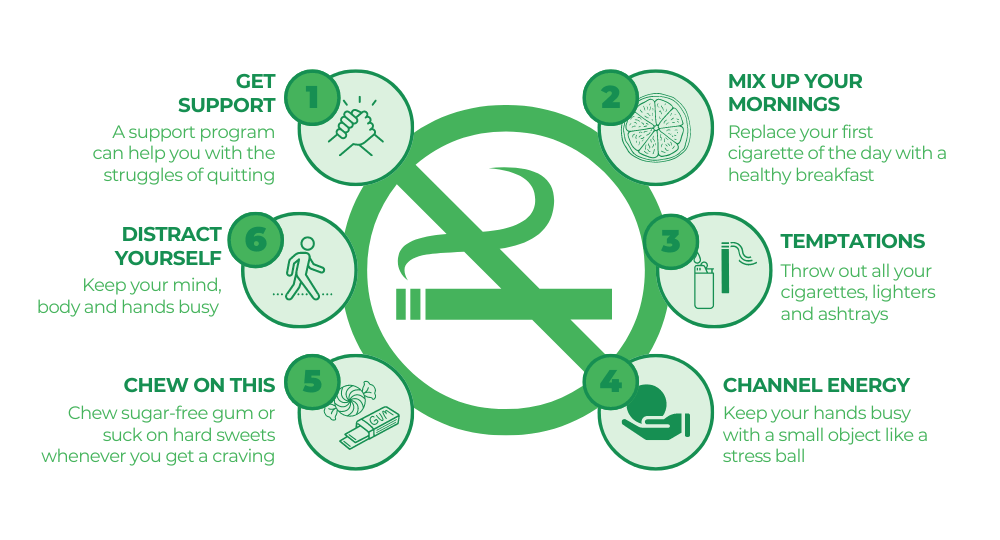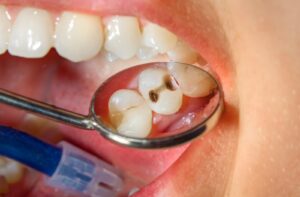Introduction: The Habit Loop
Every habit—good or bad—follows the same neurological pattern: Cue → Routine → Reward. Understanding this cycle is the key to breaking free from destructive patterns. Whether you’re battling nicotine addiction or sugar cravings, the same psychological principles apply.
This evidence-based guide covers:
- The biology of addiction
- Why willpower often fails
- Step-by-step quitting strategies
- How to handle relapses
- Long-term success techniques
The Science of Addiction
Nicotine vs. Sugar: Similar Brain Effects
| Factor | Smoking | Sugar |
|---|---|---|
| Dopamine Release | 150% baseline increase | 140% baseline increase |
| Withdrawal | 3-7 days peak symptoms | 2-5 days peak symptoms |
| Relapse Rates | 60% within first week | 75% within first month |
Key Insight: Both substances hijack the brain’s reward system, creating powerful cravings.
Why Willpower Alone Fails
The Prefrontal Cortex Problem
- Decision-making area gets fatigued
- Stress reduces self-control by 40%
- Environmental triggers overpower resolve
Research Finding: People who rely solely on willpower have 83% higher relapse rates than those using structured programs.
7-Step Quitting Strategy
1. Prepare Your Environment
- Smokers: Remove lighters, ashtrays, smoking clothes
- Sugar: Clear pantry of trigger foods
- Both: Identify and avoid “habit locations”
2. Find Your “Why”
- Write down 3 compelling reasons to quit
- Make visual reminders (phone wallpaper, sticky notes)
3. Substitute Smartly
- Smoking Alternatives:
- Nicotine gum (for chemical craving)
- Toothpicks/fidget toys (for oral fixation)
- Sugar Alternatives:
- Cinnamon gum (curbs cravings)
- Dark chocolate (70%+ cocoa)
4. Ride the Wave
- Cravings peak at 3 minutes
- Use the 4D technique:
- Delay (set 5-minute timer)
- Distract (call a friend)
- Drink (glass of water)
- Deep breathe (4-7-8 technique)
5. Reward Progress
- Track smoke-free/sugar-free days
- Put money saved in a visible jar
- Celebrate weekly milestones
6. Handle Withdrawal
- Nicotine:
- Exercise reduces symptoms by 30%
- Vitamin C accelerates nicotine clearance
- Sugar:
- Protein-rich meals stabilize blood sugar
- Magnesium supplements help with irritability
7. Build New Routines
- Replace smoking breaks with walking breaks
- Swap dessert habit with herbal tea ritual
When Relapse Happens (And It Will)
The 24-Hour Rule
- Stop immediately – don’t let one slip become a binge
- Analyze the trigger – what preceded the lapse?
- Adjust your strategy – what protection was missing?
- Forgive yourself – guilt increases relapse risk
Critical Insight: People who view relapses as learning opportunities have 3x higher success rates.
Long-Term Success Strategies
Cognitive Behavioral Techniques
- Thought Stopping: Visualize a stop sign when cravings hit
- Reframing: “I choose health” vs. “I can’t have this”
Social Support
- Quitting with a partner increases success by 50%
- Join support groups (in-person or apps like QuitNow!)
Biological Repair
- After Quitting Smoking:
- 12 hours: Carbon monoxide normalizes
- 2 weeks: Lung function improves
- After Quitting Sugar:
- 10 days: Taste buds regenerate
- 3 weeks: Energy levels stabilize
Professional Help Options
For Smoking Cessation
- Prescription medications (Chantix, Zyban)
- Nicotine replacement therapy
- Hypnotherapy (50% success rate in studies)
For Sugar Addiction
- Nutritionist-guided meal plans
- Glucose monitoring systems
- Therapy for emotional eating
Conclusion: Rewiring Your Brain
Breaking habits isn’t about deprivation—it’s about creating new, healthier patterns that eventually feel just as satisfying as the old ones. Every craving resisted weakens the old neural pathway while strengthening your self-control muscles.





